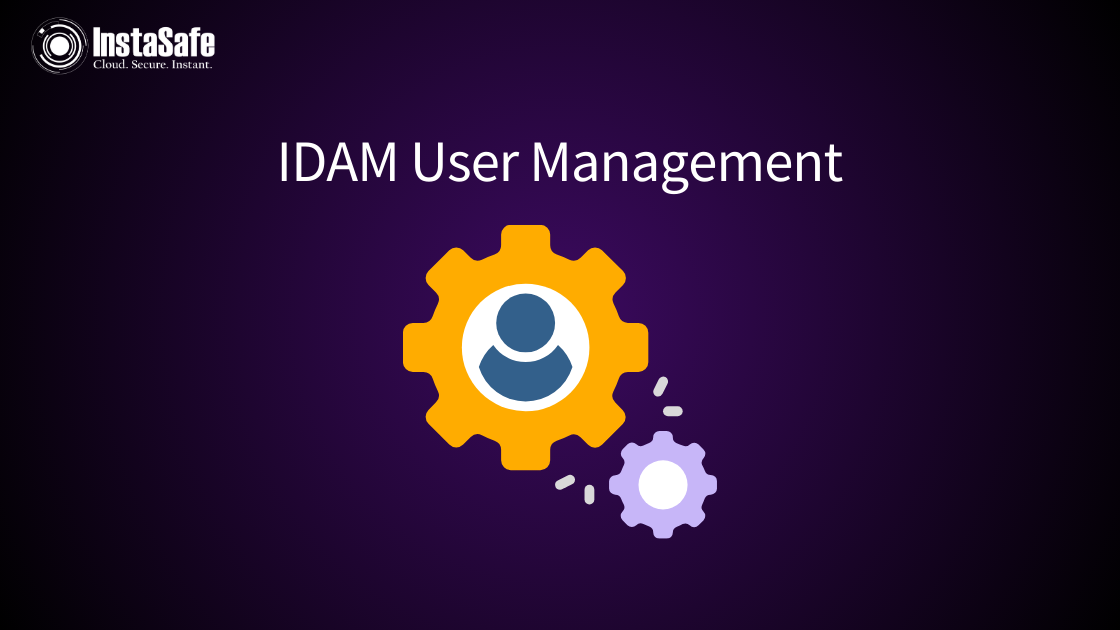IDAM User Management

Effective User Management stands as the cornerstone of robust Identity and Access Management (IDAM) solutions. This article delves into the core concepts of User Management, shedding light on its significance, functionalities, and transformative impact within the broader spectrum of IDAM.
Understanding User Management in IDAM:
User Management is a fundamental aspect of IDAM that revolves around the creation, modification, and deletion of user identities within an organization's digital environment. It encompasses a spectrum of processes and controls designed to ensure that users have the appropriate access to resources, adhering to security policies and regulatory requirements.
InstaSafe IDAM is a Directory which syncs the data two way from application to IDAM and IDAM to application. All the changes will be triggered by IDAM connector.
Key Components of User Management:
1. User Provisioning and Deprovisioning:
- Provisioning: Automated onboarding processes to grant users access to the necessary resources based on their roles and responsibilities.
- Deprovisioning: Ensuring prompt removal of access and privileges when users leave the organization or change roles.
2. Role-Based Access Control (RBAC):
- Assigning roles to users based on their job functions and responsibilities.
- Streamlining access management by associating permissions with predefined roles.
3. User Authentication and Authorization:
- Verifying the identity of users during the login process.
- Granting access based on predefined authorization policies and user roles.
4. Password Management:
- Implementing secure password policies, including complexity requirements and regular expiration.
- Enabling users to reset passwords securely through self-service options.
5. Single Sign-On (SSO):
- Allowing users to access multiple applications with a single set of credentials.
- Enhancing user convenience while maintaining security standards.
6. User Profile Management:
- Maintaining accurate and up-to-date user profiles, including contact information and role details.
- Supporting personalization and customization of user experiences.
- InstaSafe IDAM solution creates an unique alphanumeric ID for user seggregation. User ID generated is unique to every user throughout the user Life cycle.
Advantages of Effective User Management in IDAM:
1. Security Reinforcement:
- Mitigating the risk of unauthorized access through proper authentication and access controls.
- Safeguarding sensitive data and critical systems from potential security threats.
2. Compliance Adherence:
- Facilitating compliance with industry regulations, data protection laws, and internal policies.
- Providing audit trails and documentation for regulatory audits.
3. Operational Efficiency:
- Streamlining identity and access management processes.
- Reducing manual efforts in user onboarding, offboarding, and access modifications.
4. User Convenience:
- Enhancing the user experience by providing streamlined access to resources.
- Minimizing friction in daily workflows through efficient user management practices.
5. Proactive Risk Mitigation:
- Identifying and addressing identity-related risks in real-time.
- Enabling proactive measures to prevent potential security incidents.
Implementing User Management in IDAM - Best Practices:
1. Comprehensive User Identity Mapping:
- Ensuring a clear understanding of user roles, responsibilities, and access requirements.
- Mapping user identities to organizational needs for effective provisioning.
2. Automation and Workflow Integration:
- Automating user onboarding, offboarding, and access modification processes.
- Integrating workflows to ensure consistency and efficiency in user management.
3. Continuous Monitoring and Review:
- Implementing continuous monitoring of user activities and access.
- Regularly reviewing and updating user roles and permissions based on changing business needs.
Conclusion:
User Management stands as a linchpin in the realm of Identity and Access Management, orchestrating the delicate balance between security and accessibility. By embracing effective User Management practices, organizations not only fortify their digital landscapes but also empower users with streamlined and secure access to resources. It's not just about managing users; it's about orchestrating a seamless and secure digital experience for every individual within the organizational ecosystem.
